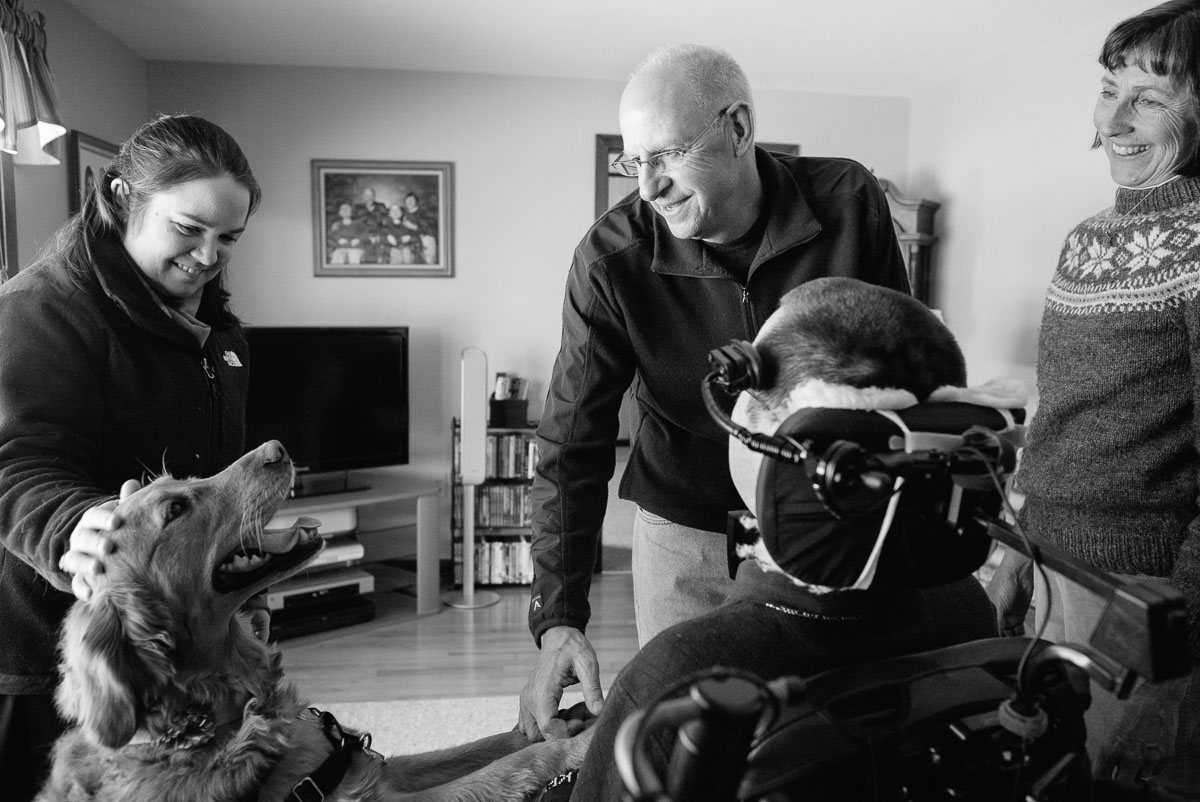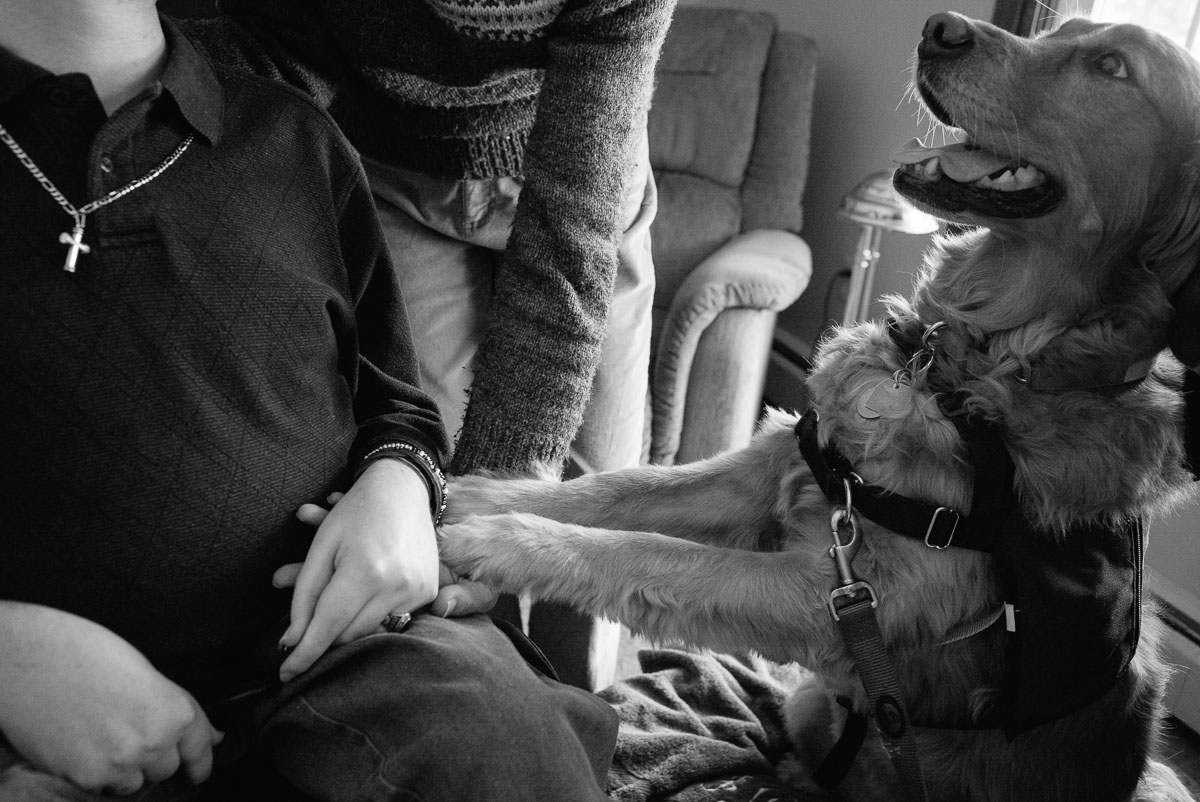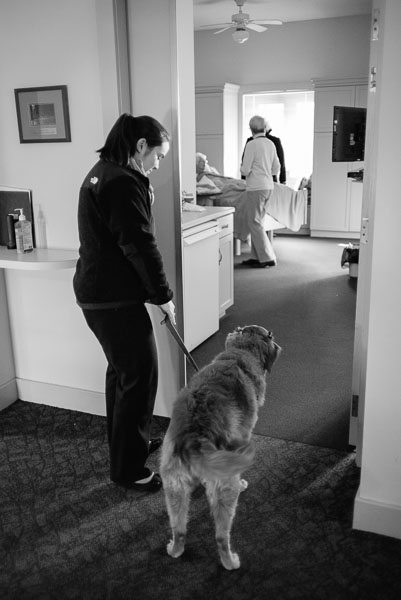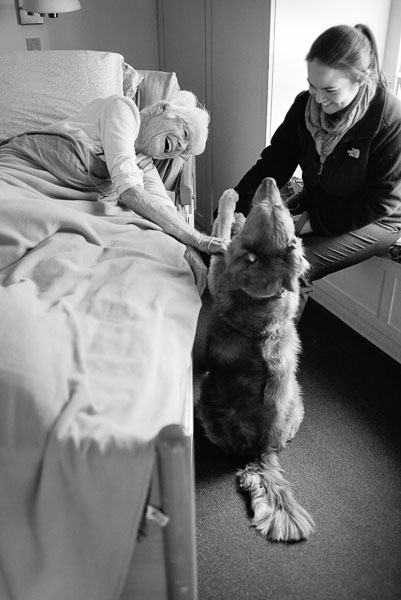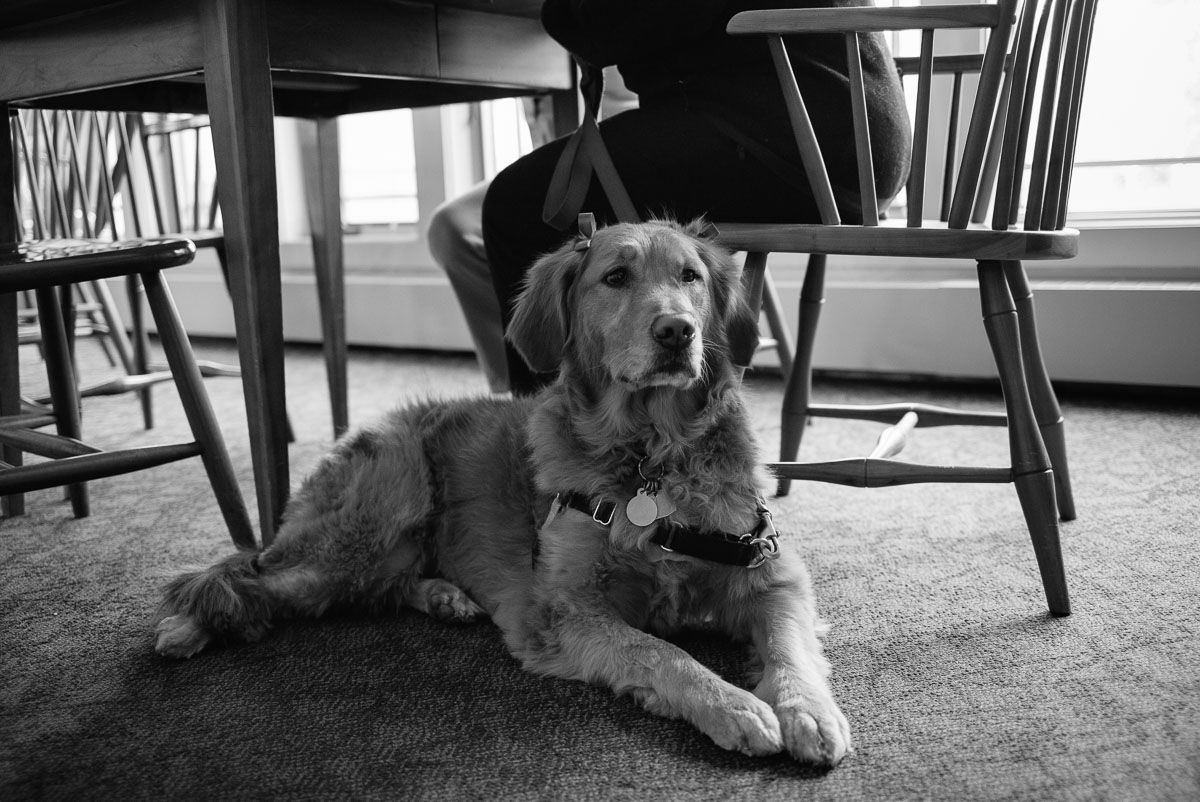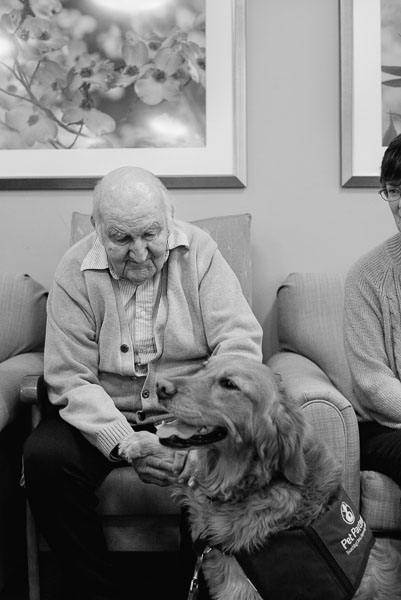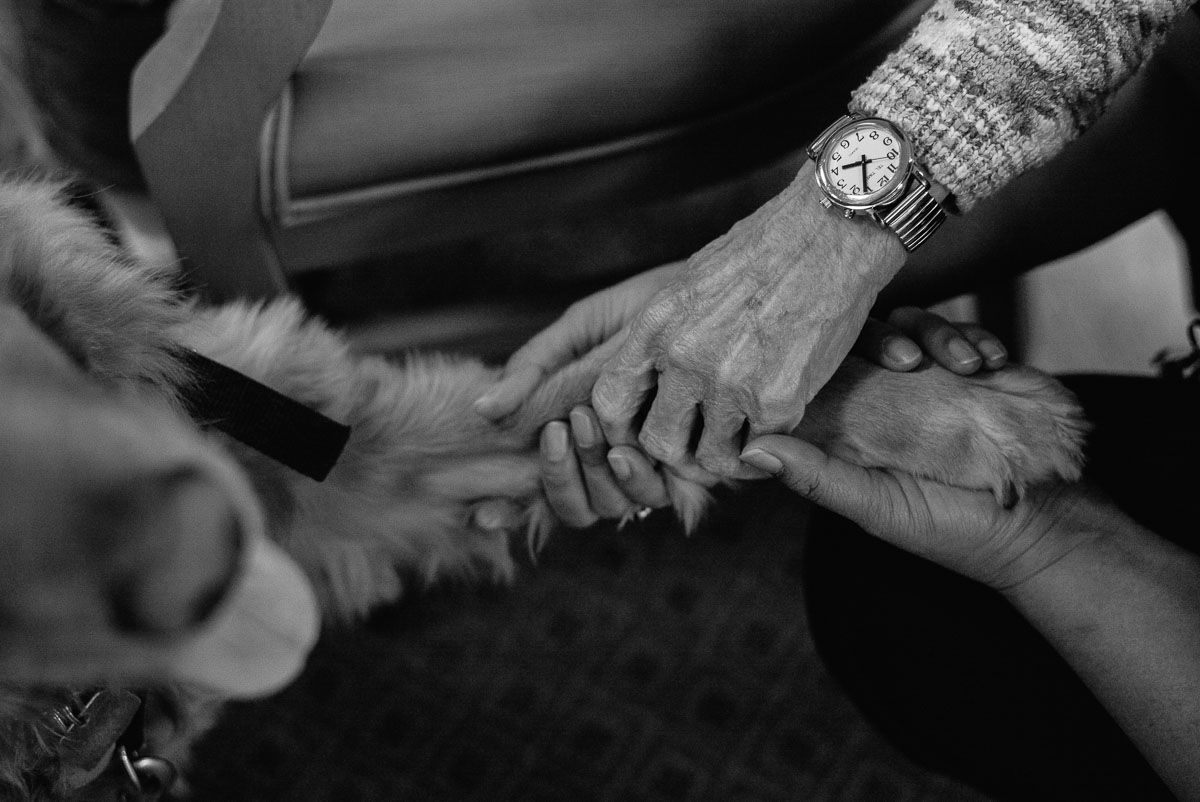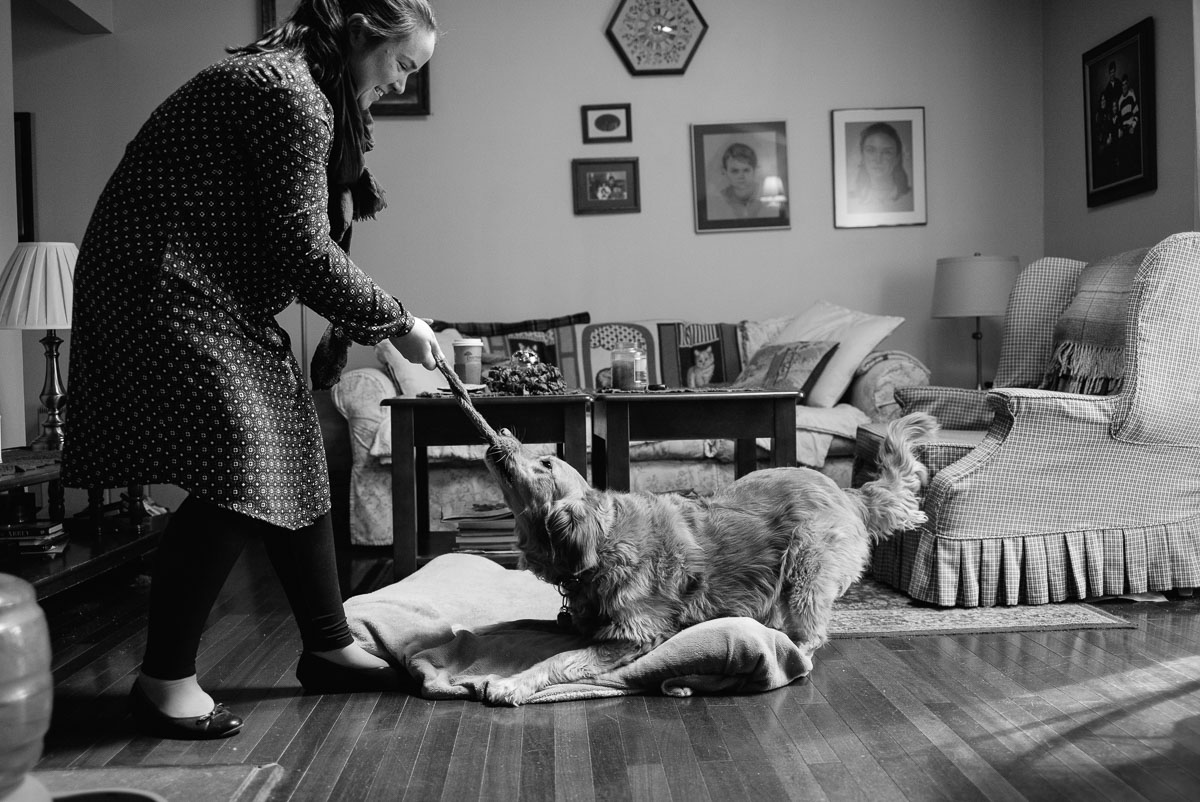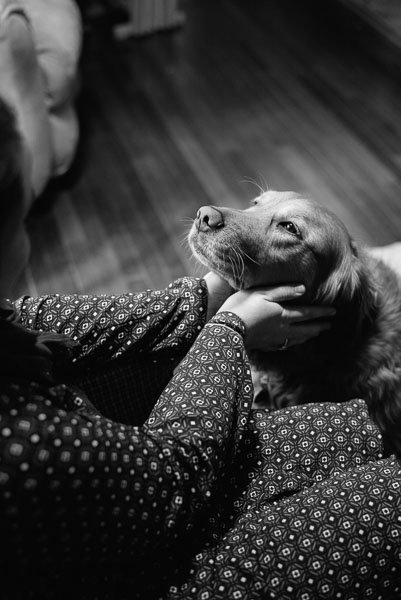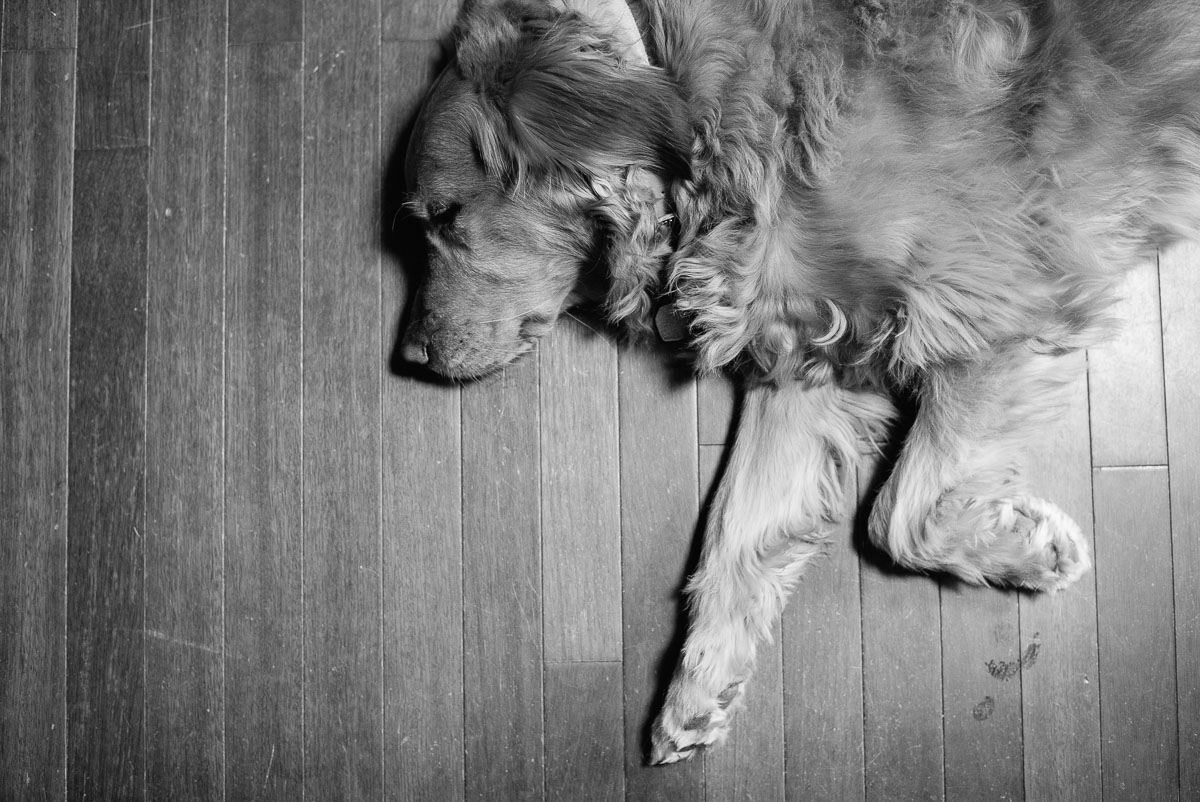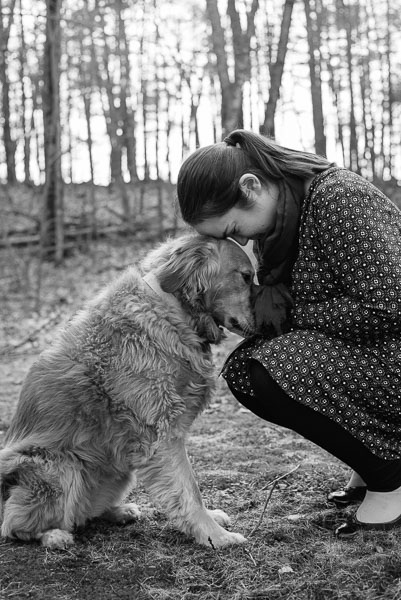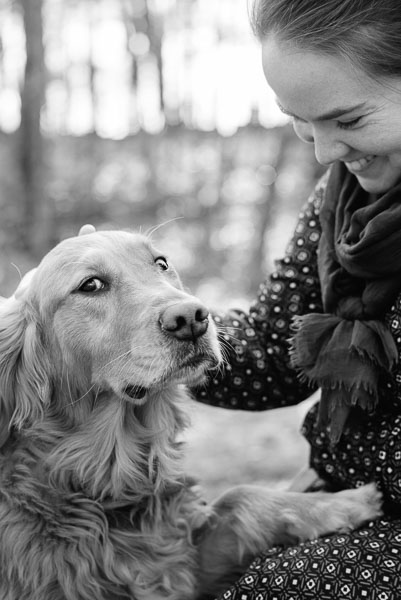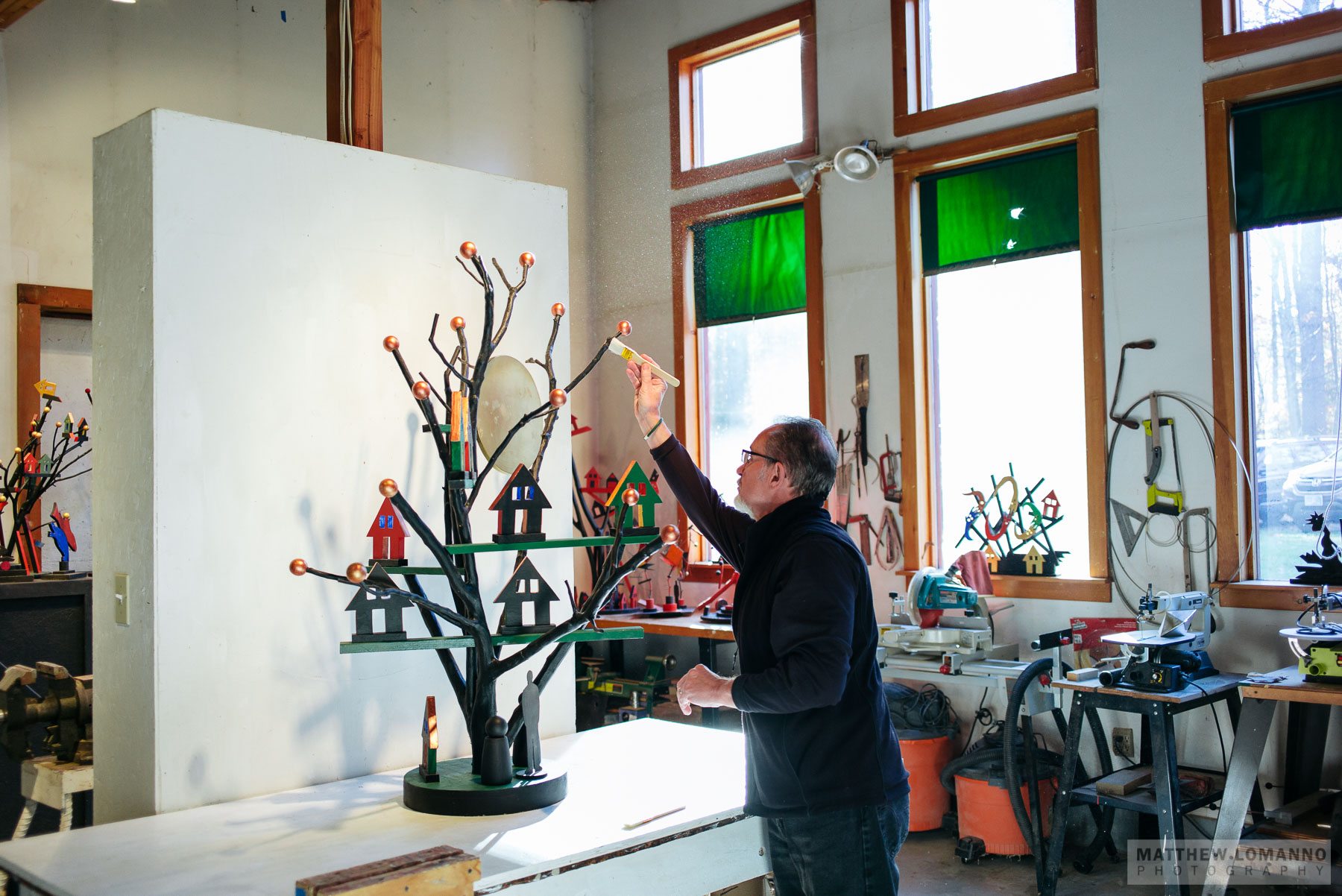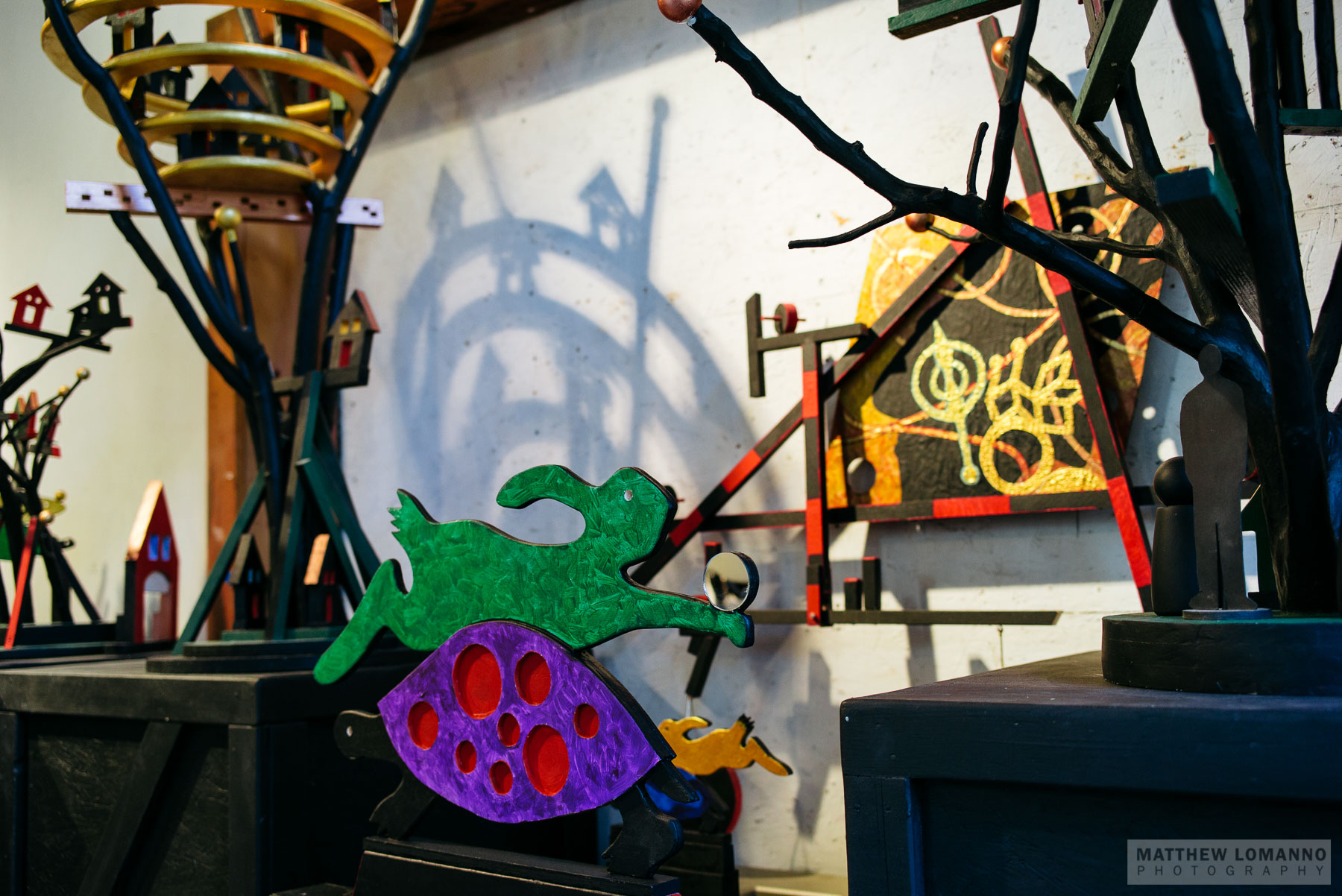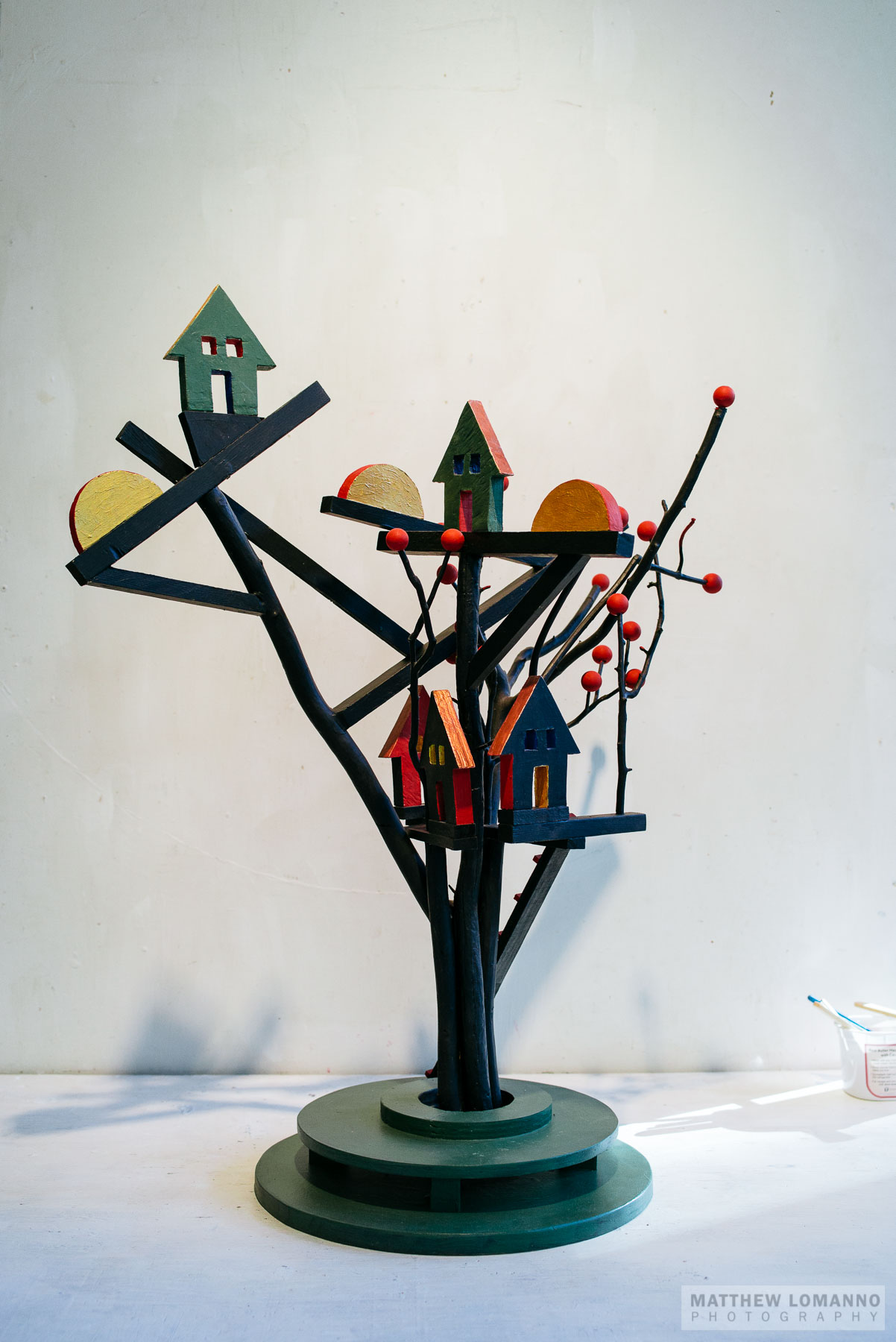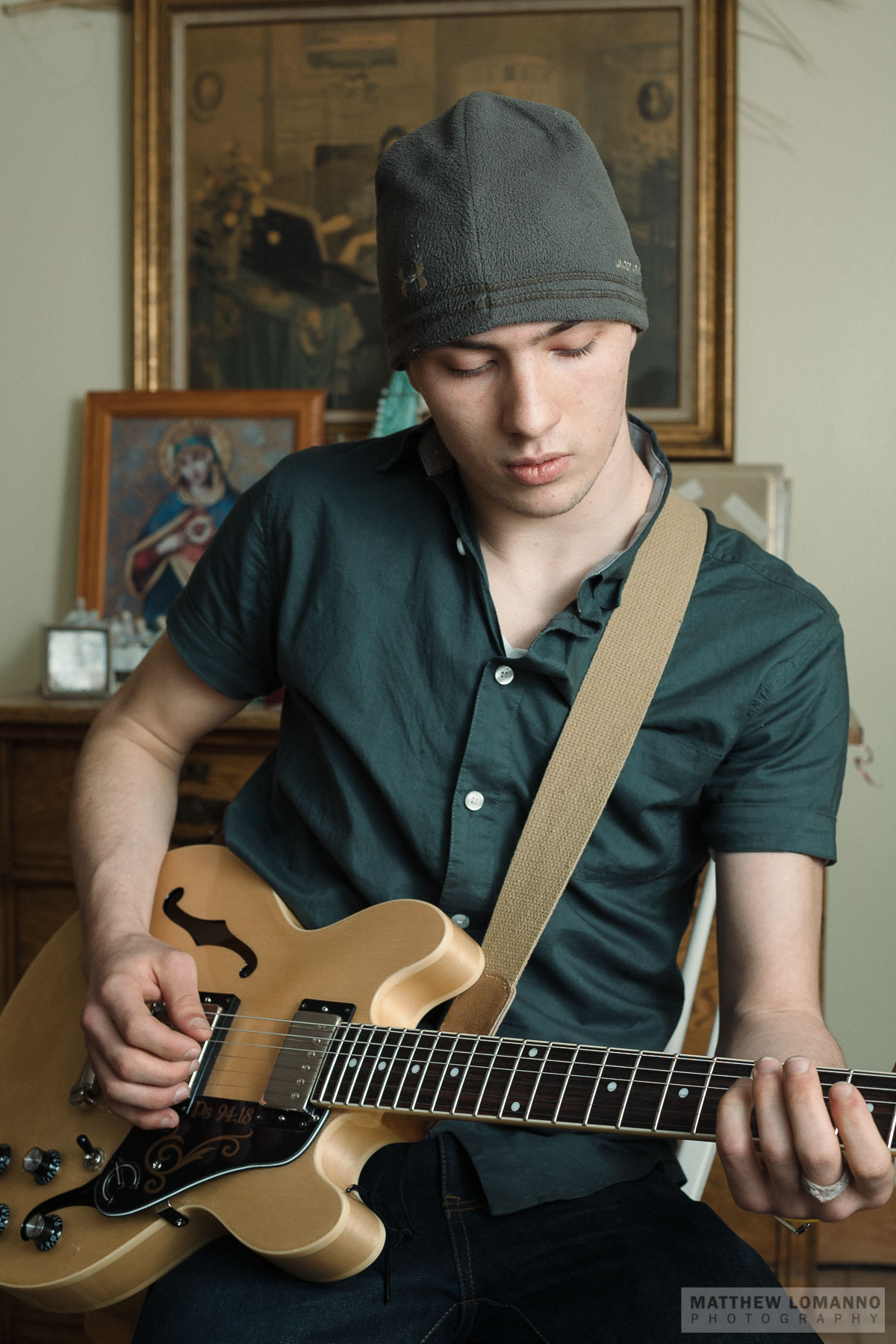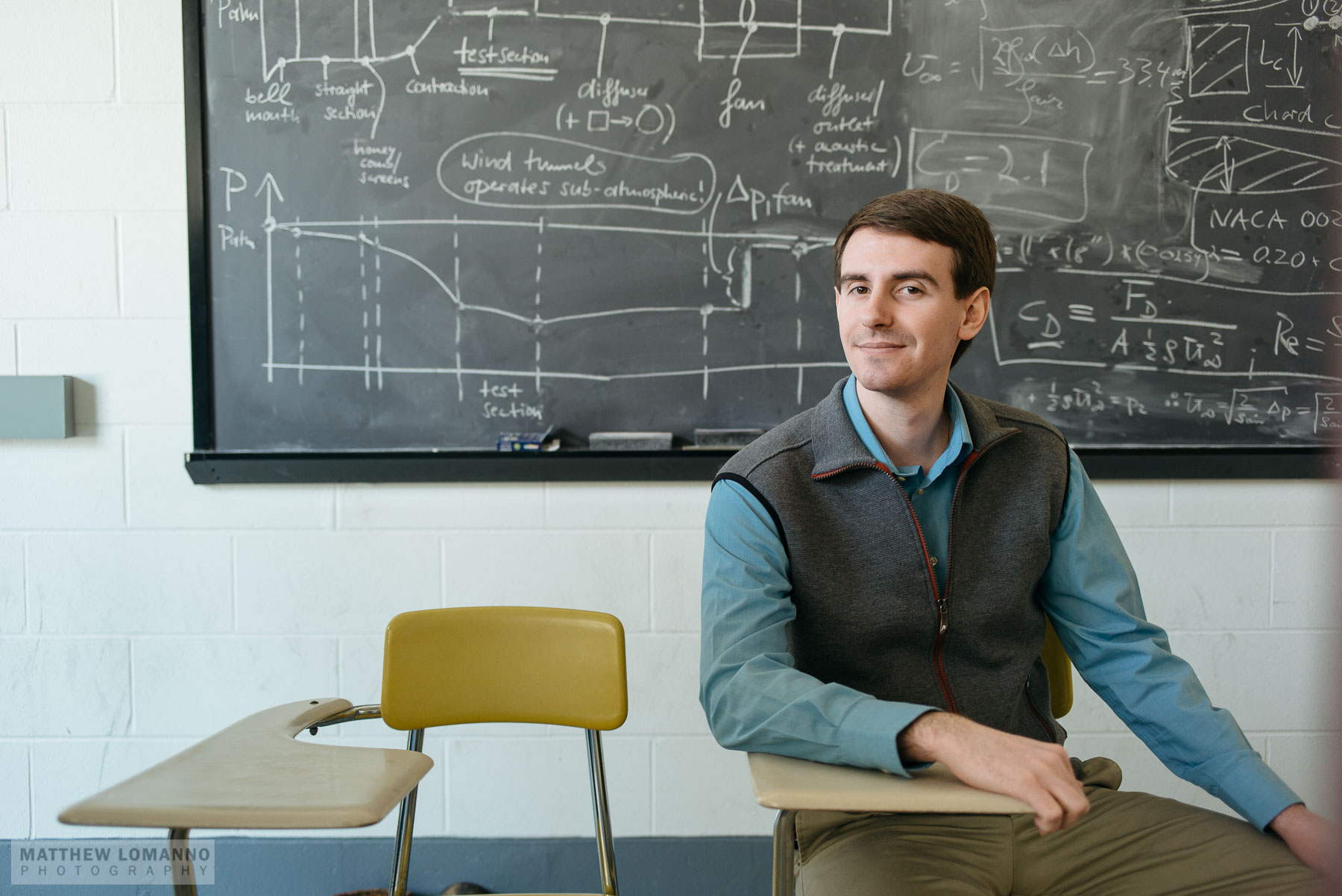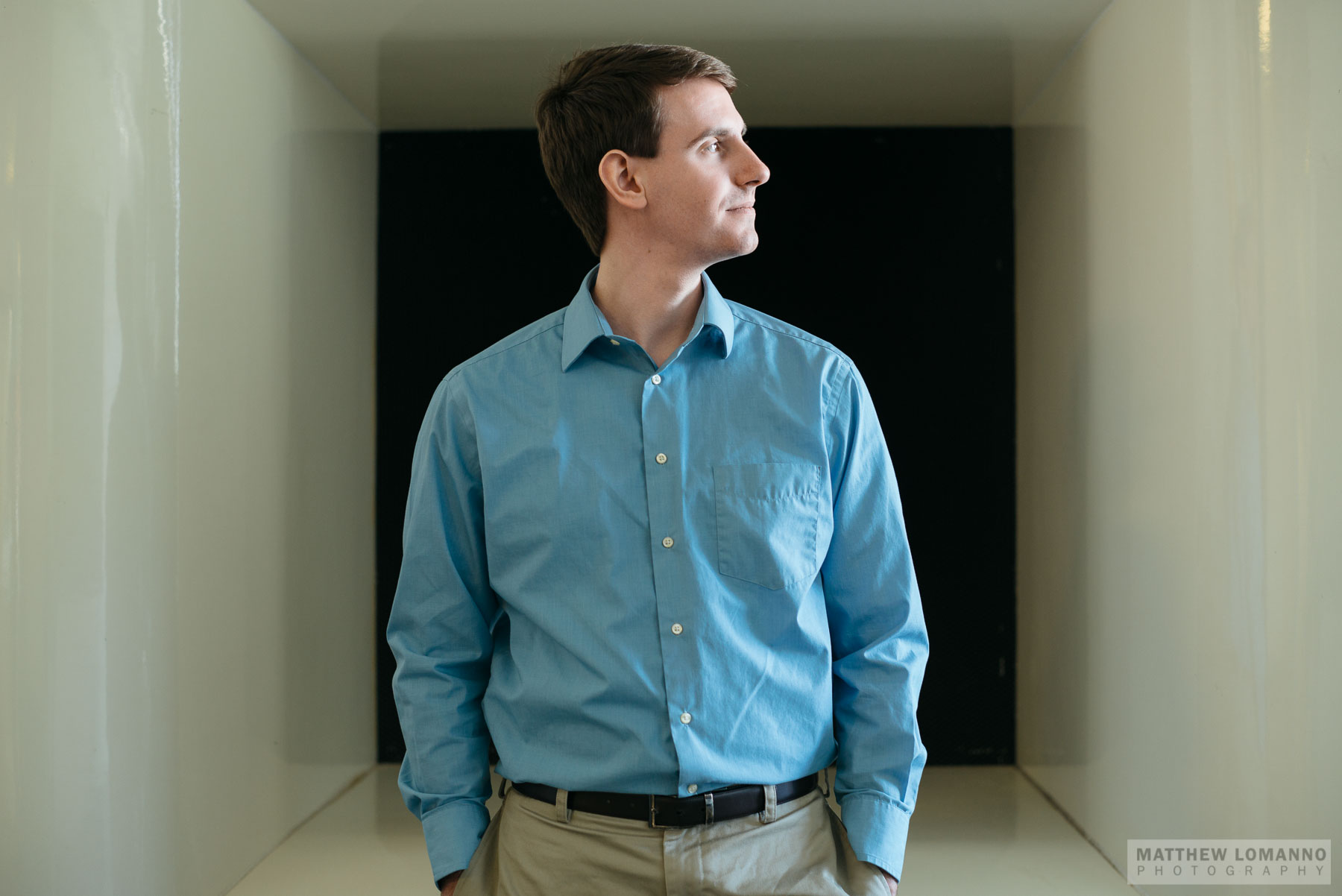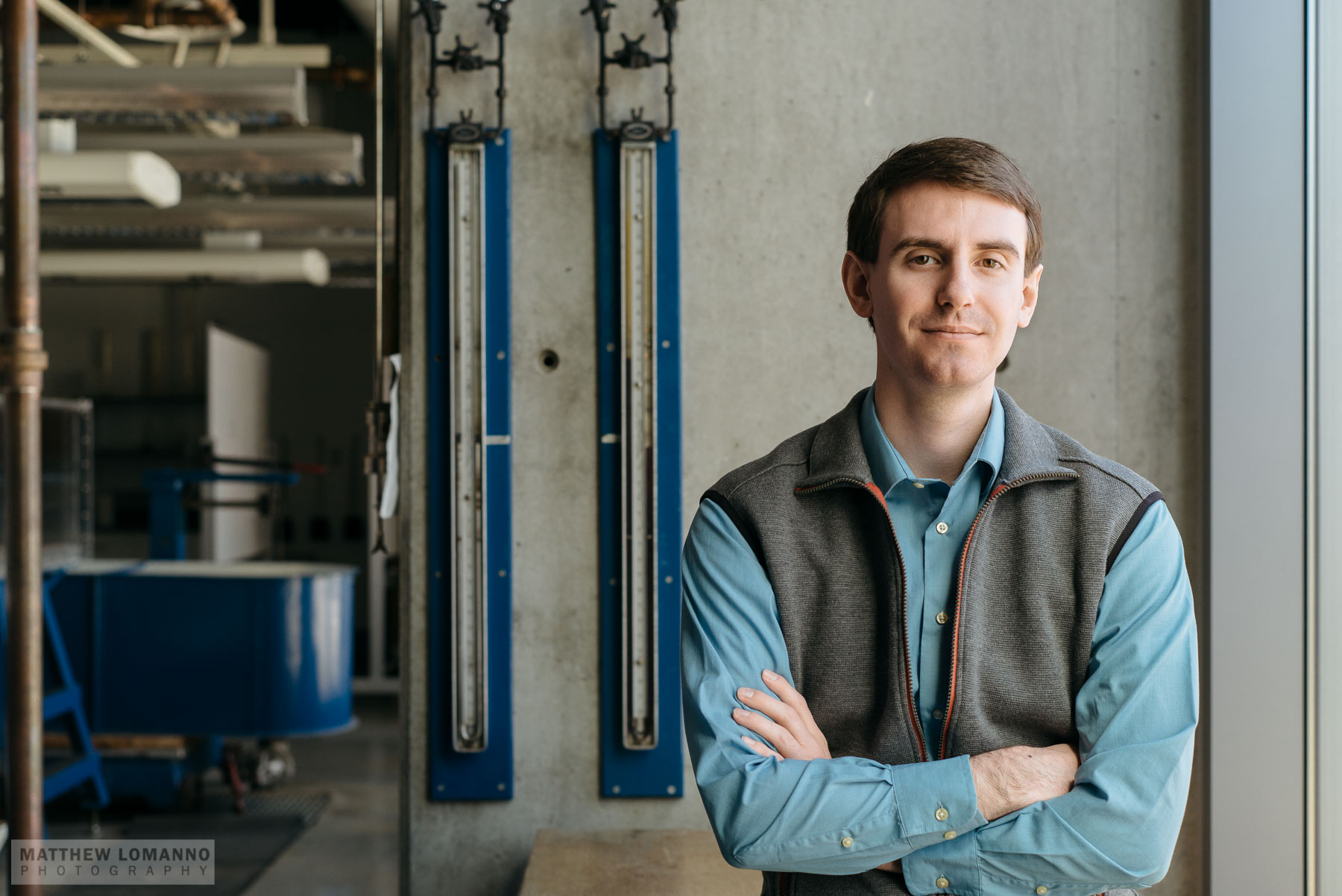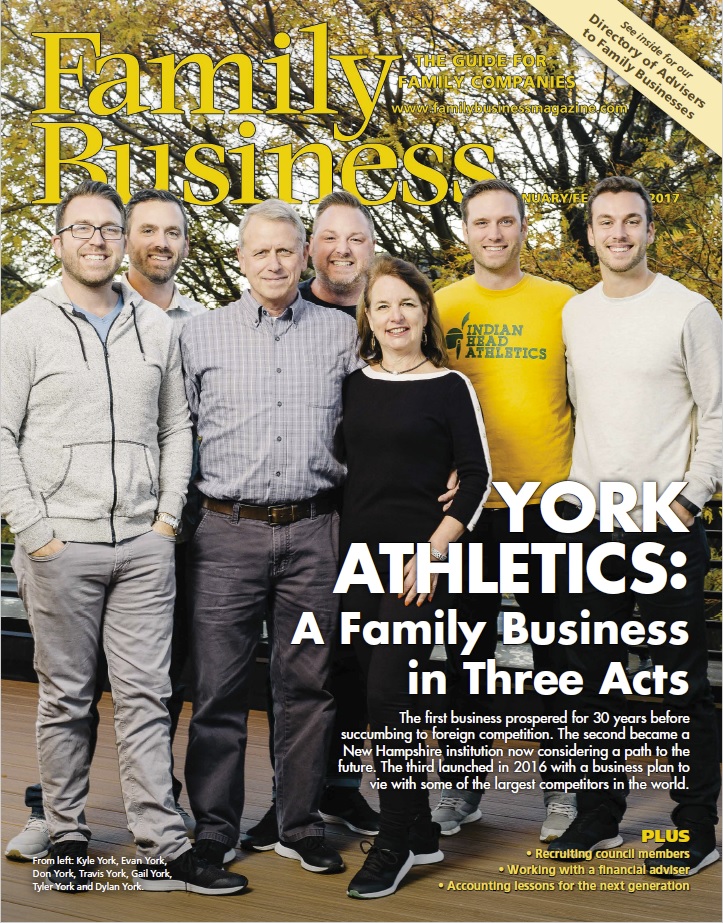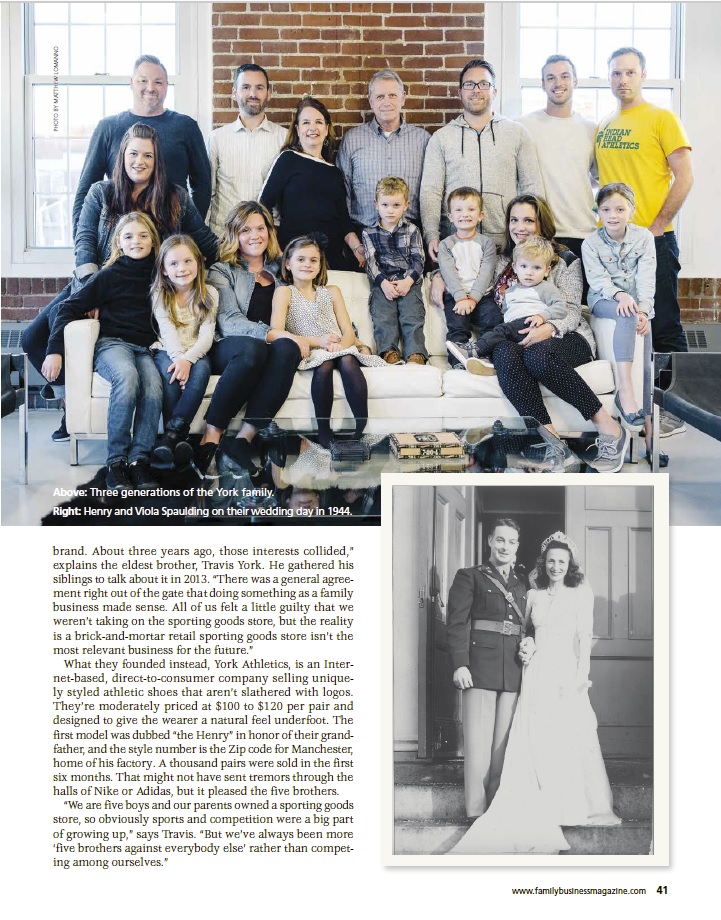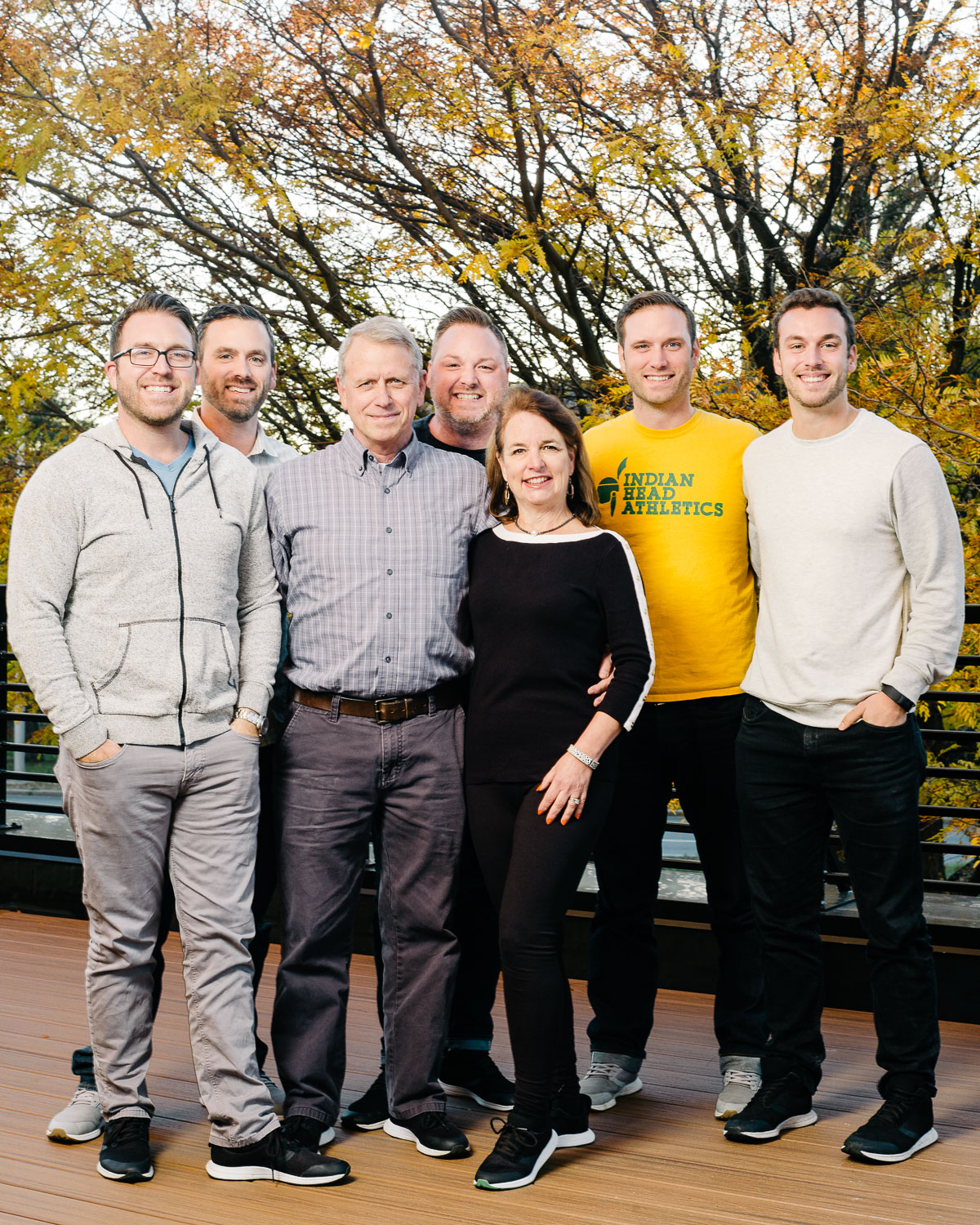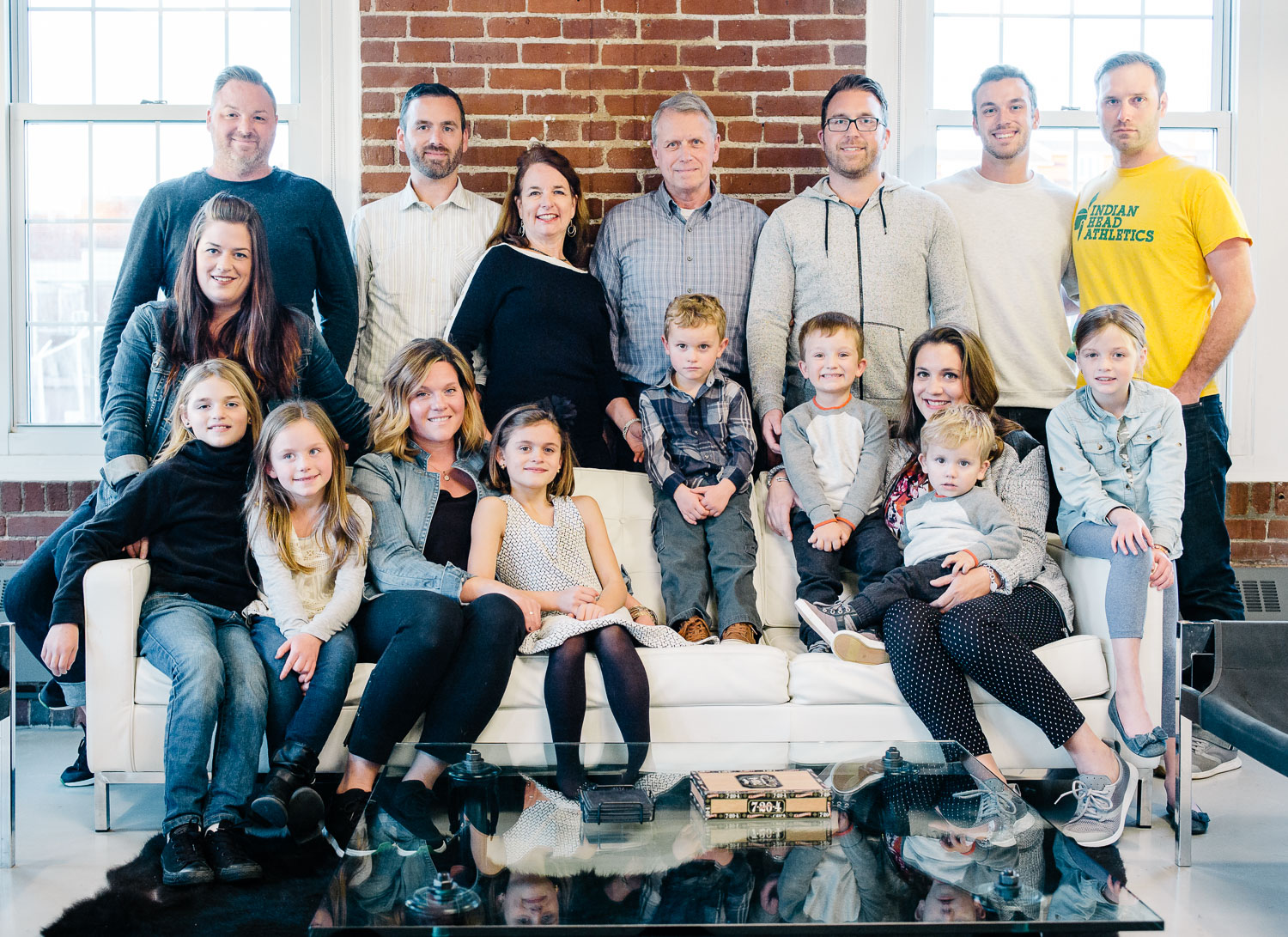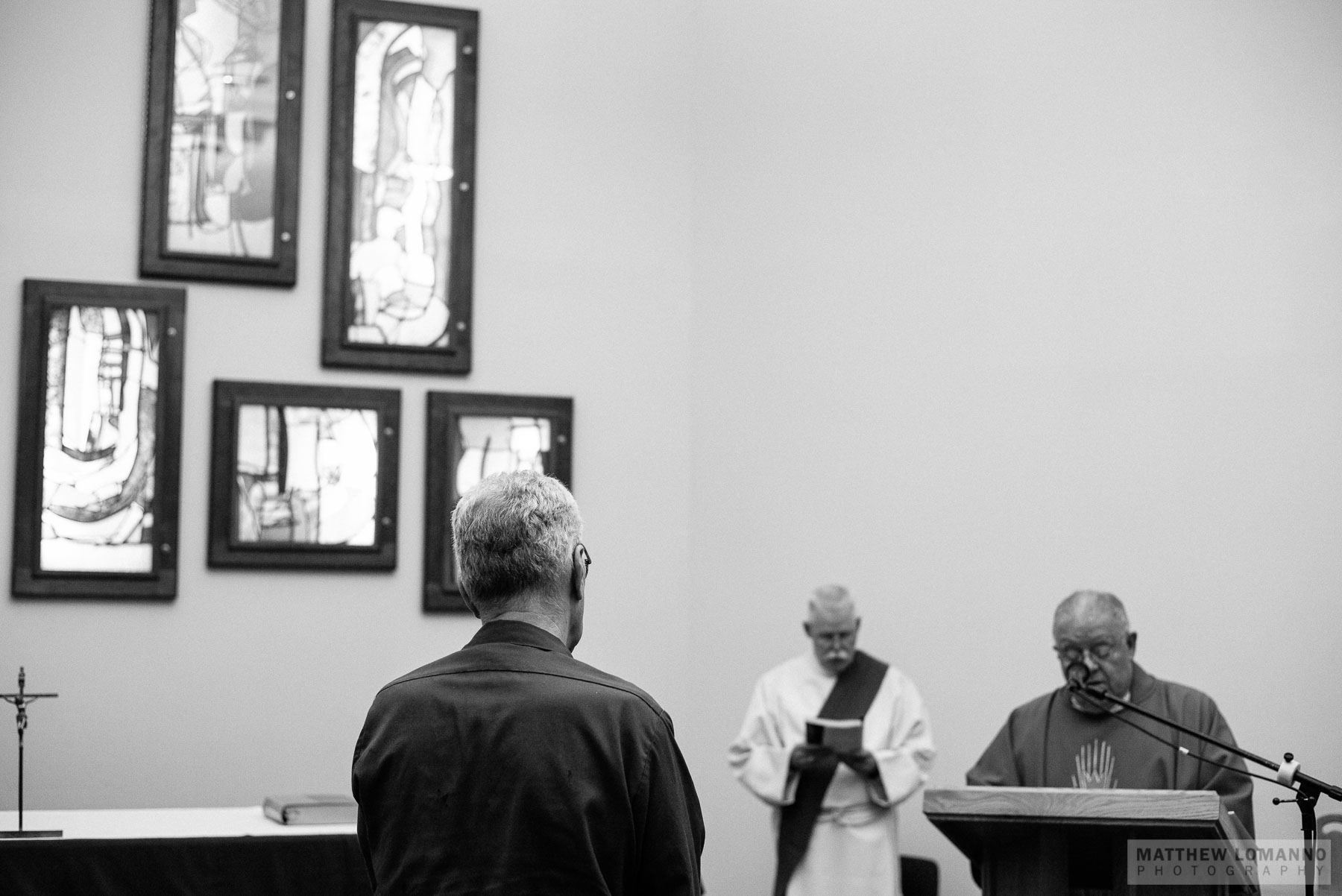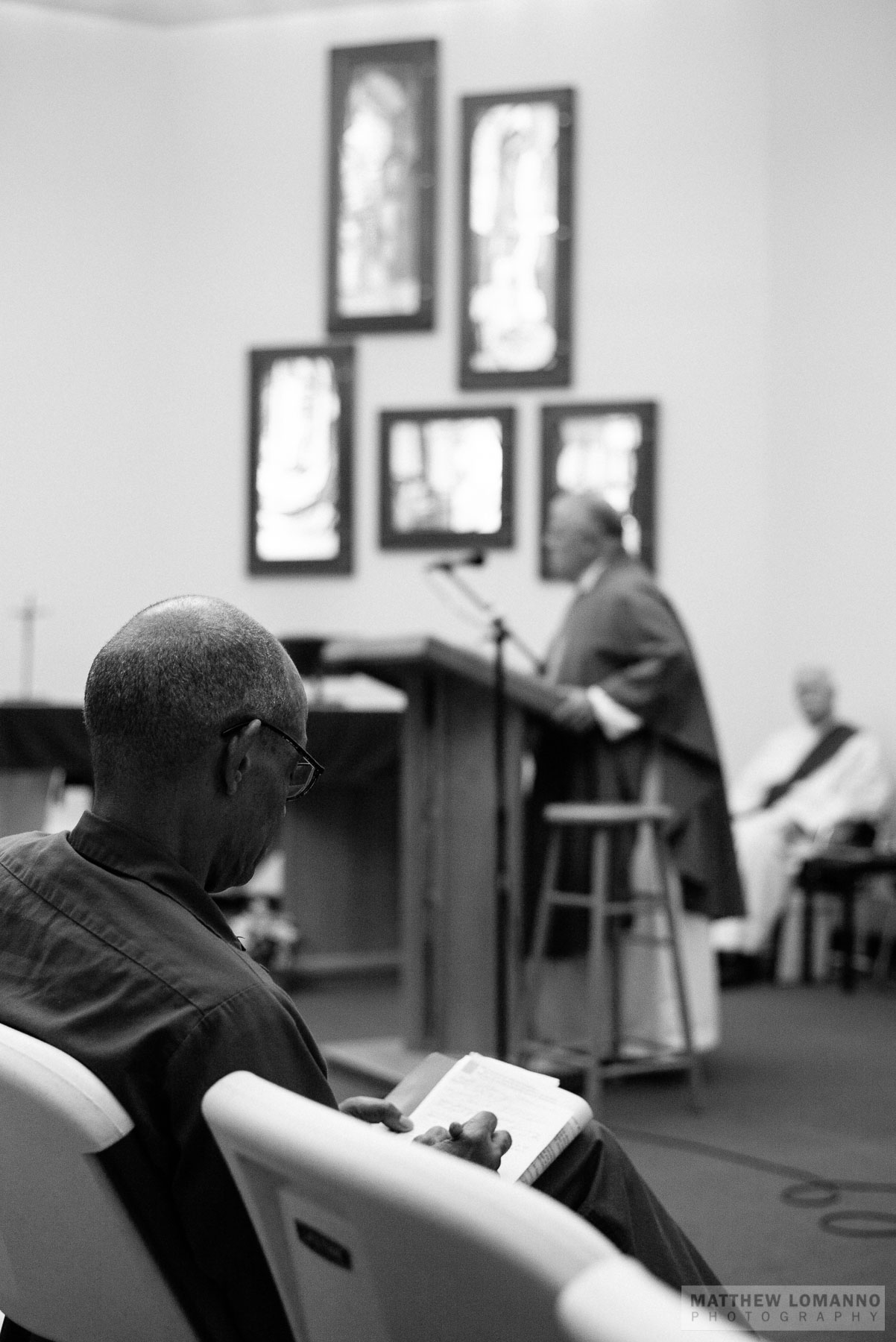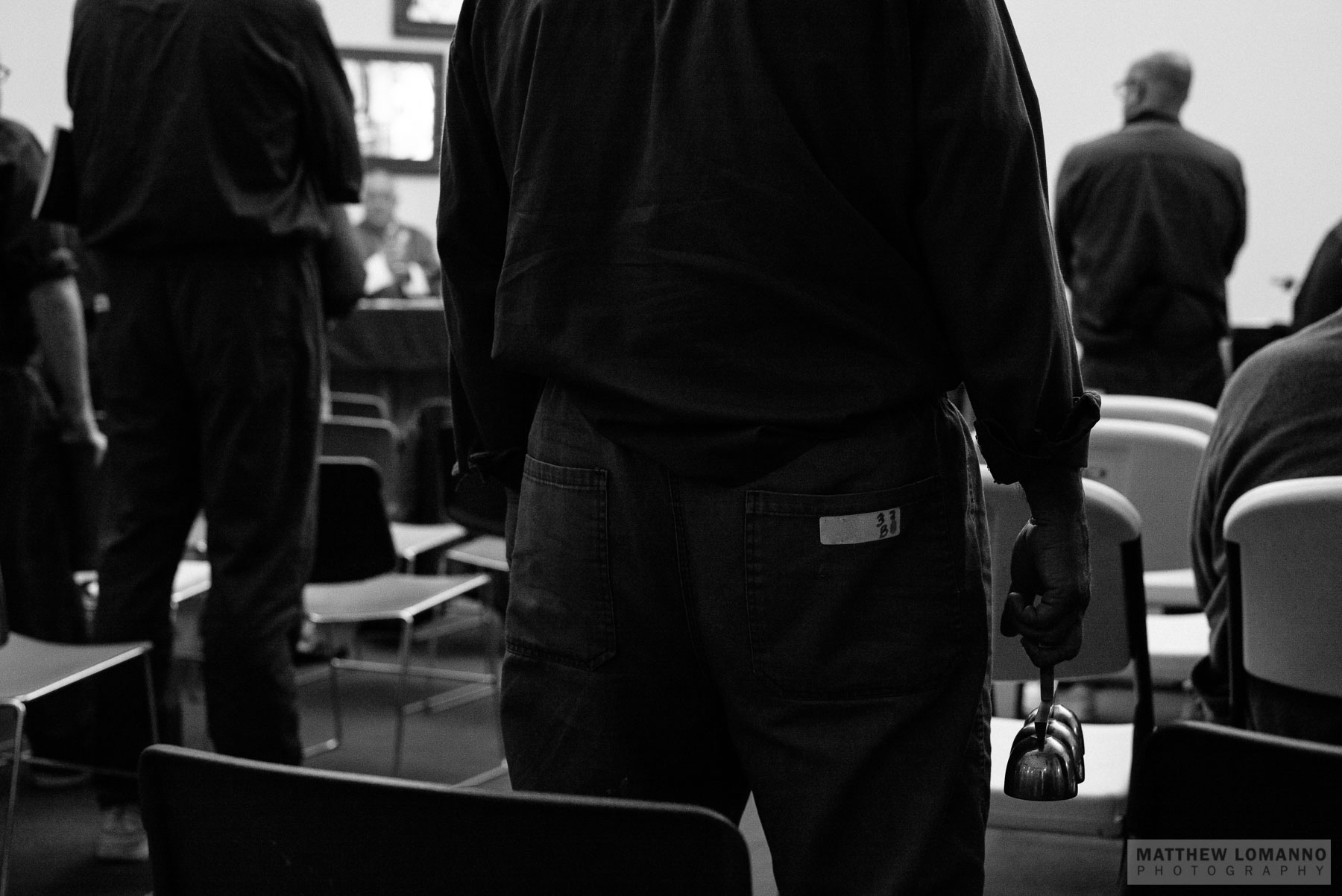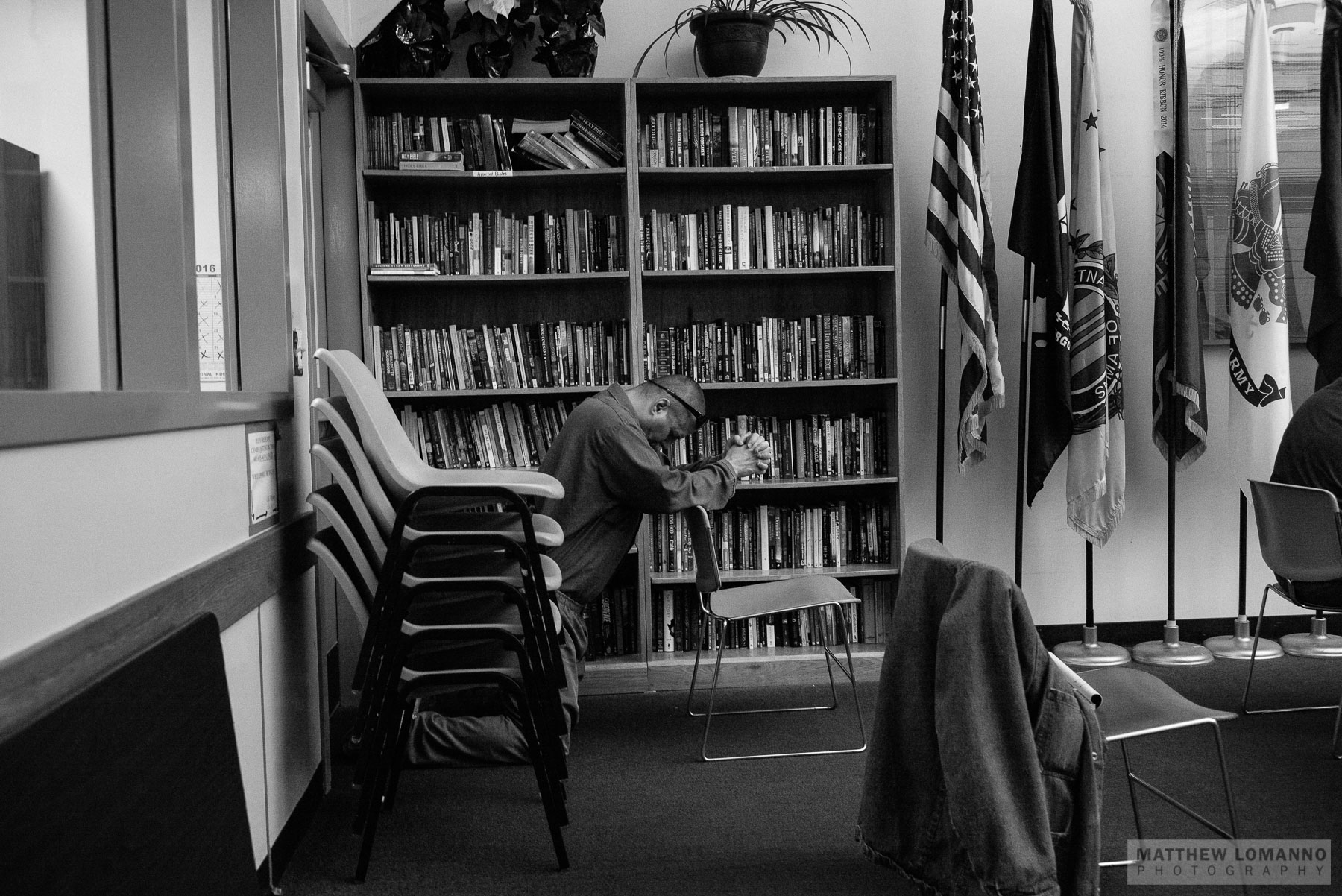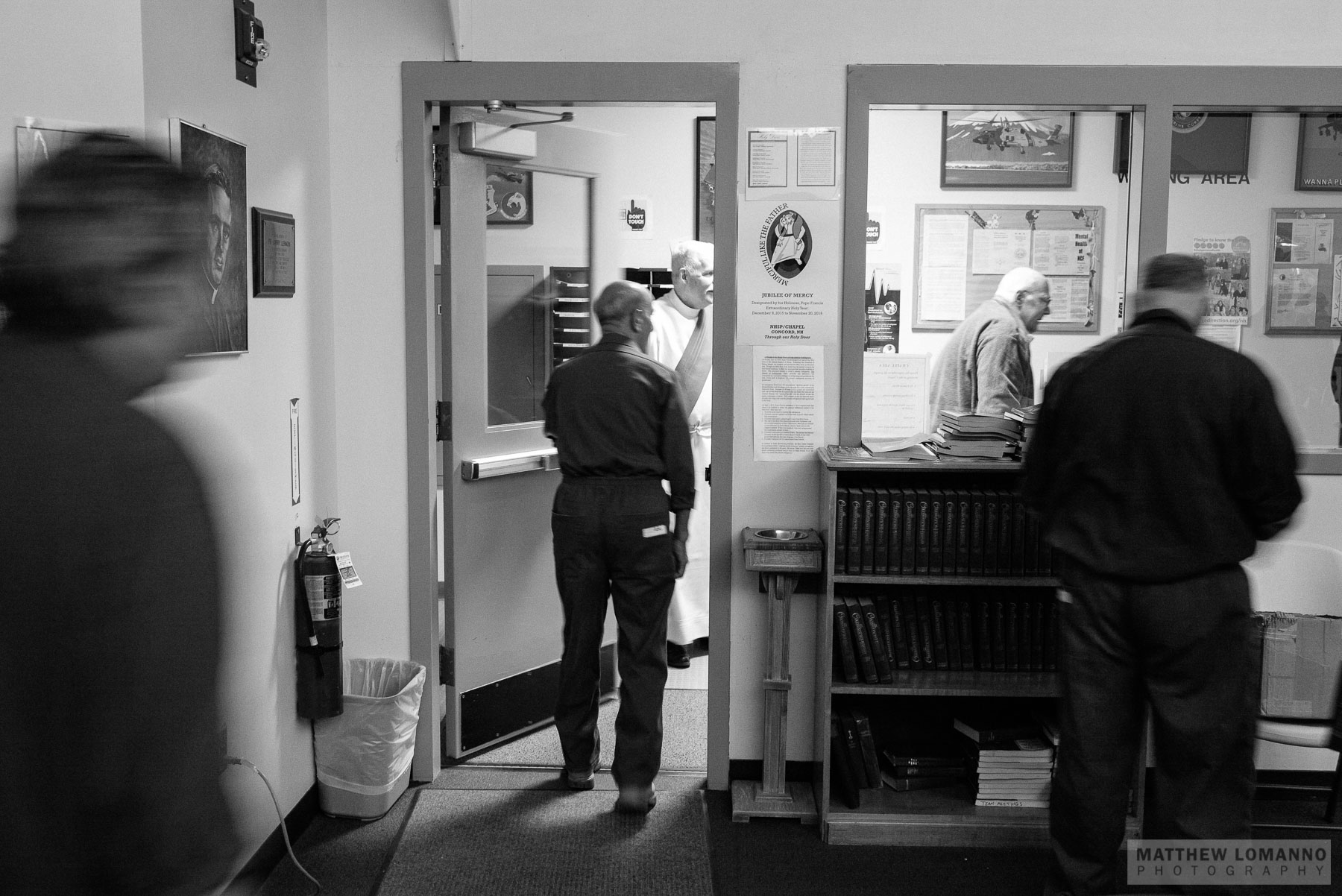This post is a long overdue: I recently realized that, despite being created and published in 2016, I had never posted the work here. My words here will be minimal, mostly limited to background and logistics, since my brief essay and captions are better read with the photos, as published (link below).
I received this assignment from Parable Magazine to create a photo essay about Kate and her dog, Orla, both of who had been working in pet therapy (via the national organization Pet Partners) for some time. Kate, a practicing Catholic, recognizes this ministry as a way to serve and comfort the sick.
One of the challenges for creating the work was that their schedule only saw them serving once per month: to observe and understand them sufficiently—and to create a body of work broad enough to fill the pages—required planning and working together over four months. Each visit, though, was entirely unique: a private home, a nursing home (in fact, two, but one was visiting individual patients while the other was a group therapy session), and visiting Kate and Orla at home (which is where the final photographs and the cover were made).
These two make an incredibly kind and caring team. I can say easily that I've never met a more gentle and trusting dog than Orla, who knew me and was comfortable with me from our first meeting. That speaks volumes about Kate.
My photographs and words were the cover story for that issue of Parable and can be seen in the magazine's online version. In 2017, the Catholic Press Association gave the work five awards (ranging from the cover and individual photos to the entire published set)—truly a wonderful honor.
I am tremendously grateful to Kate, Orla, and the families and individuals who allowed me to create during these very special moments.
